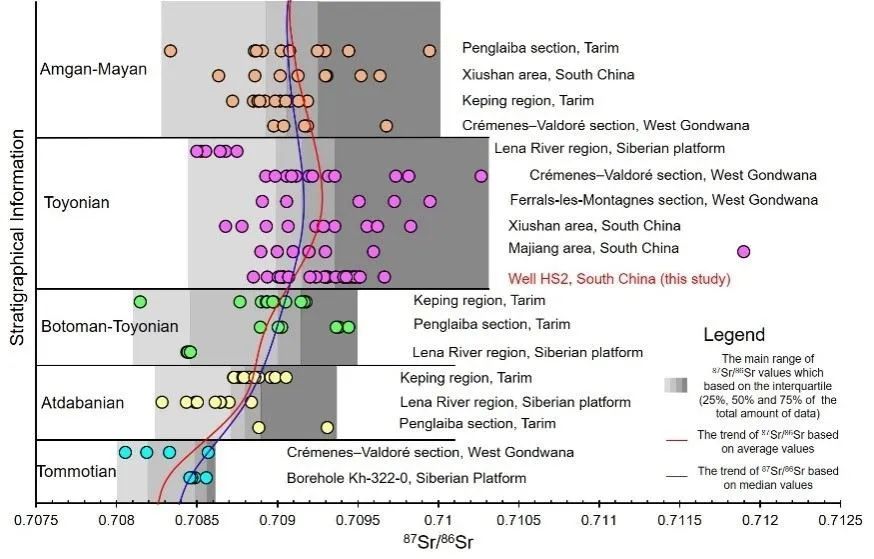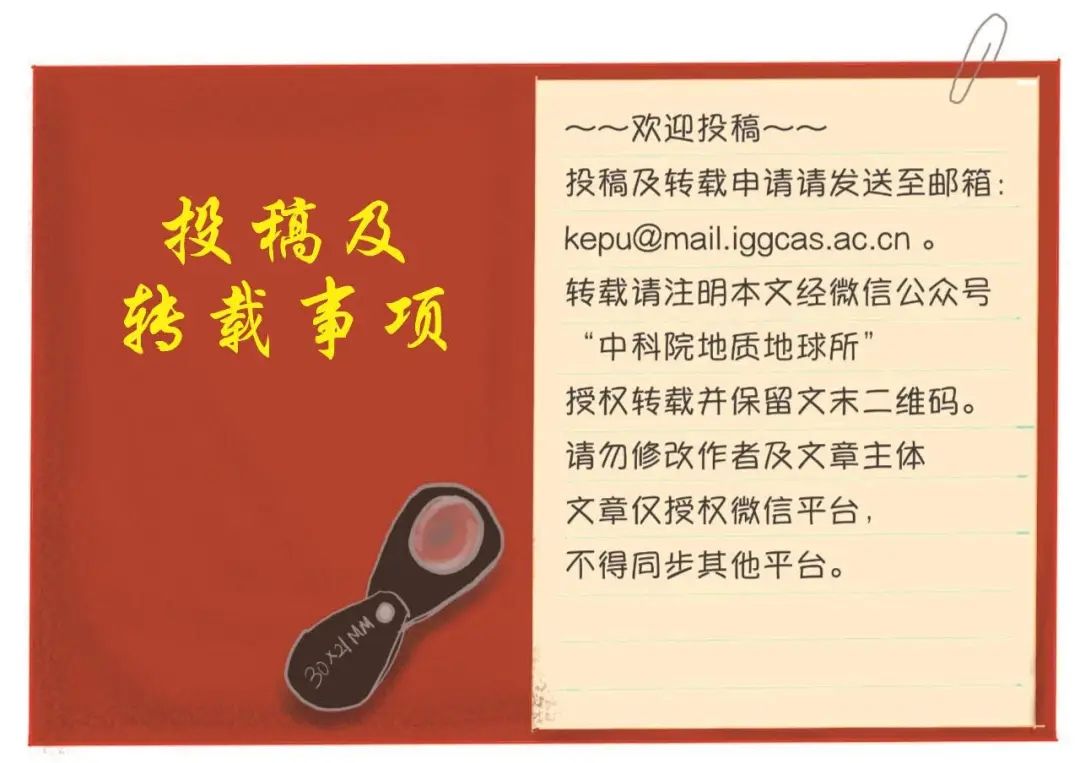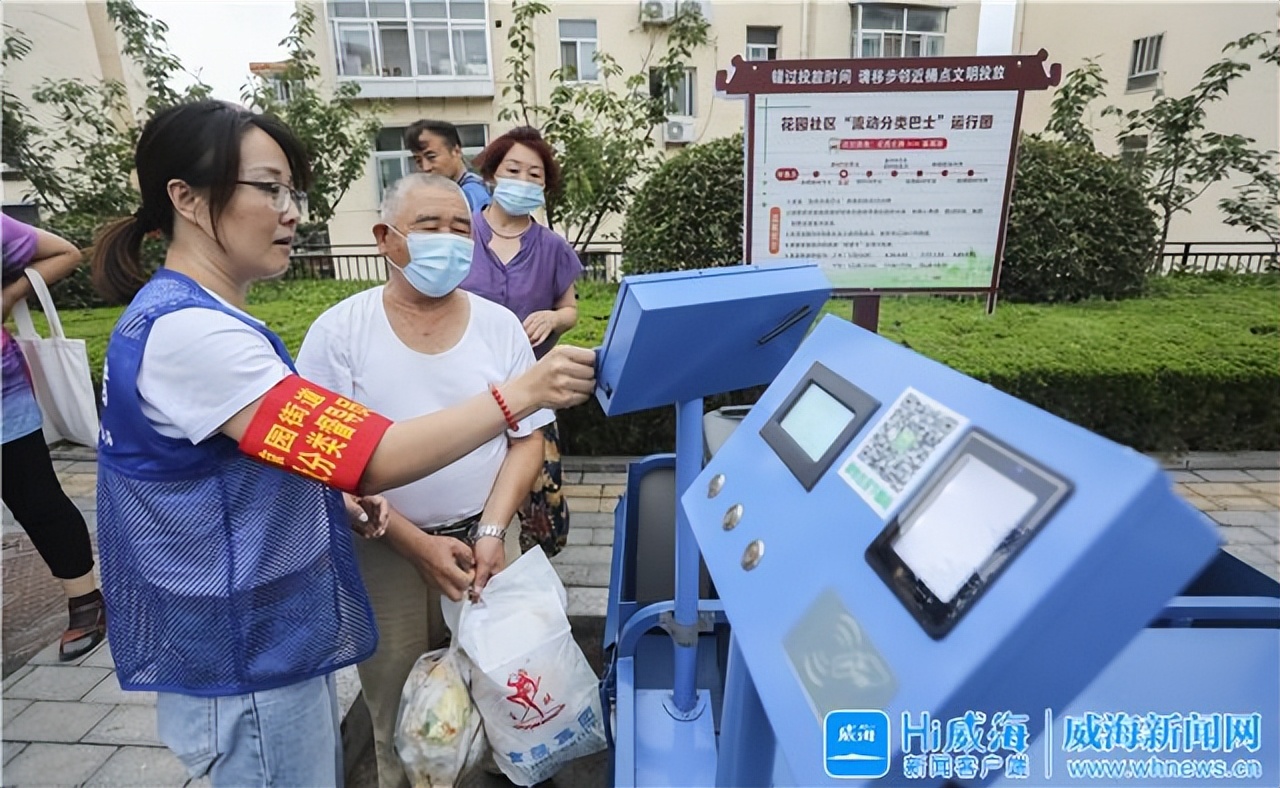Zhang Pengyuan et al.-GR: Early-Zhonghan Wu Shi Environmental Evolution and ROECE Carbon isotope drifting incident new interpretation
Author:Institute of Geological Earth Time:2022.07.10


Early Cambrian (about 520 million years ago) the earth system witnessed the rapid evolution of life. Biological species and individual sizes increased sharply, known as Cambrian Explosion. Subsequently, the creatures have experienced several extinction incidents, including the "Boyomian-Toyonian Crisis" or "SINSK Incident" and early-Zhonghan Wu Shi turning period (TOYONIAN) ROECE incident. The process and causes of the predecessor's focus on the outbreak of life and the Boyomian-Toyonian crisis. Compared with it, the ROECE event trigger mechanism characterized by Redlichiid and Olenellid extinction and obvious carbon isotopes is still controversial. The ocean environment records of the Toyonian period in different regions of the world show inconsistency, which further caused many uncertainty in the trigger mechanism of the ROECE incident. Therefore, the relationship between the end of the marine environment and the ROECE incident at the end of the early -term Wayonian TOYONIAN is still yet to be studied.
In response to the above scientific issues, Zhang Pengyuan, a doctoral student of the Institute of Geology and Earth Physics of the Chinese Academy of Sciences, and researcher Wang Yongli, co -co -instructed by the Chinese Petroleum Exploration and Development Institute, Zhang Xiaojun, a senior engineer of the Northwest Branch of the Petroleum Exploration and Development Institute, Researcher Wei Zhifu, the Northwest Ecological Environmental Resources Research Institute of the Chinese Academy of Sciences, etc. The carbonate rock heart of the Tai Sichuan Basin HS2 well Longwang Temple group continuously sampled, and the high -precision carbon (Δ13C), oxygen (Δ18O), 锶 (87SR/86SR) isotope and elemental global chemical records of carbonate rocks were reconstructed. Wu Shi Toyonian's ancient ocean environment, combined with the global strata comparison of carbon and the same position, put forward a new understanding of the ROECE event trigger mechanism.

Figure 1 Sichuan Basin HS2 well Dragon King Temple Group carbon oxygen isotope and element record (T represents ancient temperature, Z represents ancient salinity)

Figure 2 The global ROECE incident comparison (data comes from Chang et al., 2017; ren et al., 2017; zhu et al., 2004; Wang et al., 2011; wotte et al., 2007; Guo et al., 2010 ; Montaeezet et al., 2000; Dillard et al., 2007)
In this study, the top carbonate rock on the top of the Longwang Temple group recorded a obvious carbon isotope negative incident (Figure 1), which corresponds to the global ROECE incident, and the comparison of carbon homogen in the same period indicates that the ROECE incident is in different deposition environments ( The amplitude and geometric shape of shallow water carbonate rock platform, slope and deep water basin) are significantly different (Figure 2). The ROECE amplitude of the deep -water basin is significantly greater than the shallow water carbonate rock platform (Figure 2), which may be caused by the marine surface and deep inorganic carbon stocks in the carbon homicide gradient. In addition, the shallow water carbonate rock platform is susceptible to the regional environment and structural events, resulting in the difference between the carbon isotope signal recorded in it and the deep water basin. The global 锶 isotope records show that the value of the apex of the early cold martial elegance is the peak of the entire geological history period (~ 0.7085-0.7095) (Figure 3), which indicates the strong continental weathering effect and the lower sea level plane. In this context, shallow water deposition carbonate rocks are easily exposed by surface and stratigraphy erosion, thereby forming a geometric shape of the ROECE incident in different regions (Figure 2). Based on this, the study believes that the carbon isotope drift signal presented by shallow water carbonate rocks is the result of the common role of global and regional geological events.
Traditional views believe that global sexuality invasion of deep hypoxic hydraulic bodies invades shallow water areas, which in turn leads to extermination of shallow sea creatures (such as Redlichiid and OLENLLID Trinus). With the reduction of marine productivity and decreased organic carbon buried in the extinction incident, the event of a negative drift of carbon isotopes (zhu et al., 2004; zhuravled and wood 1996). However, global sexuality assaults will inevitably lead to negative drifts, which is obviously inconsistent with the ingrains at the top of the HS2 well Longwang Temple group (Figure 1 and Figure 3). Similar scenes also occurred in the Siberian carbonate rockle (Montañezet Al., 2000), indicating that global sexual sea assaults are not the only factor that causes the ROECE incident. In addition, the oxidation and reduction sensitive element data of the HS2 well Dragon King Temple group also shows that the ocean is mainly oxidized or sub -oxidized water bodies in this period (Figure 1), which indicates that the hypoxia environment in shallow water is not necessarily the only factor in triggering the ROECE incident (Faggetter et al., 2017; li et al., 2017).
In order to further explore the driving factor that triggers the ROECE incident in the shallow water area, the study was rebuilt based on a variety of elements and isotopes of earth chemical indicators to rebuild the early marine environment of the early cold martial arts. The high 87SR/86SR value) consumes a lot of atmospheric CO2 (Figure 1 and Figure 3), resulting in the turnaround period of the early-cold martial arts (approximately 51 billion years ago) of the marine temperature (Figure 1), indicating the cold marine environment ; It is worth noting that the decrease in the concentration of the atmospheric CO2 concentration of the early-cold martial arts turning period will then bring negative feedback to weaken the weathering effect of the mainland. Bio-useful nutrients (P elements, etc.) (Figure 1) created a maritime environment of poor nourishment; given a variety of records of the early-mid-cold martial arts and ocean environment (pyrine ore form, elements and paleontology, etc.) It has also revealed that the hypoxia environment is possible for triggering the ROECE event (zhu et al., 2004; zhuravlev and wood 1996). Based on this study, the cause of the ROECE incident proposes a new explanation based on the ancient environment: cold and nutritious marine environment, and the rapid hypoxia environment brought by the sea invasion may jointly trigger the ROECE incident in shallow water. Figure 3 The comparison of the global early cold martial crime isotope (data comes from Ma et al., 2015; shi et al., 2003; wotte et al., 2007; wang et al., 2011; kochnev et al., 2018; derry , 1994; zhang et al., 2020)

The results were published in the international academic journal Gondwana Research (Zhang Pengyuan, Wang Yongli, Zhang Xiaojun, Wei Zhifu, Wang Yan, Zhang Ting, Ma He, Wei Jingyi, He Wei, Ma Xueyun, Zhu Chenxi.carbon, Oxygen and Strontium Isotopic and Elemental Character Formation in South China: Paleoenvalonmental Significance and Implications for Carbon ISOTOPE Excursions [J]. Gondwana Research, 106: 174-190. Doi: 10.1016/J.GR.2022.01008). Studies have been jointly funded by the National Natural Science Foundation of China (41831176), the Second Qinghai -Tibet Science Project (2019qzkk0707), the Strategic Pioneer Science and Technology Special of the Chinese Academy of Sciences (XDB26000000), and the horizontal topic "Rock Sample 锶 Hemotimen Test Analysis and Research".
Beauty editor: Fu Shixu

School pair: Wanpeng
- END -
The coverage rate of residential communities in the Weihai domestic garbage classification and launch facilities reaches 100%

Nowadays, Yue Changhong's family in Tsinghua Garden, Yatou Street, Yingcheng City,...
How to buy a mat in a hot summer day?Remember to do these three actions →

The mat is a must -have for the summer of each family. Unqualified quality directl...